Monumentality in Microcosm
| Memorial Statues |
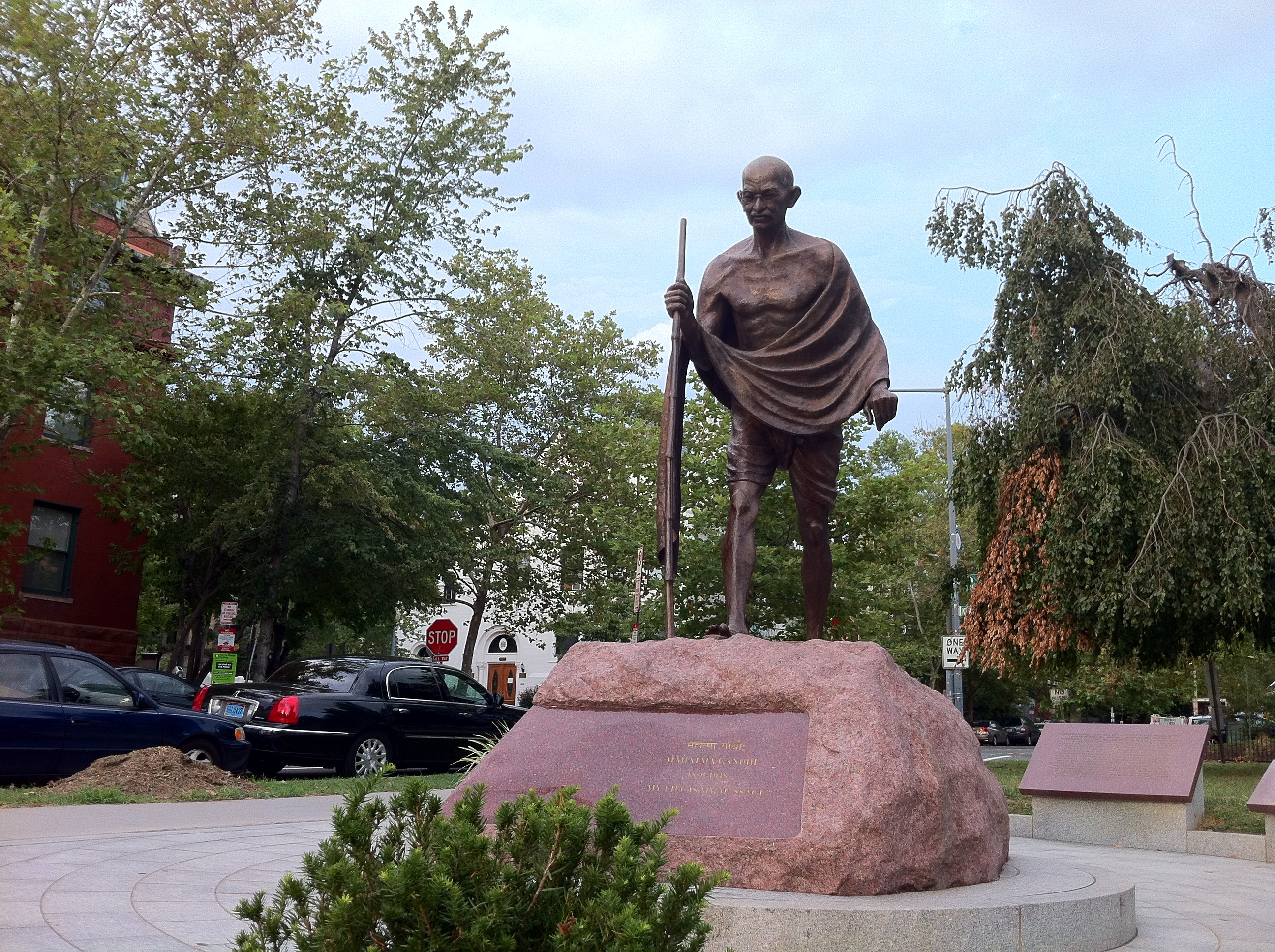
Ghandi, Reservation 58, NW (Abad Ocubillo 2012)
Triangle parks interact with the social fabric of Washington, D.C. in surprising and varied ways. Across the city and over centuries, these small public parcels figure into the expression of community identity, and the operations of commerce and business. Furthermore, the 19th-century precedent of granting private landowners responsibility for improving and maintaining adjacent open space also creates variable conditions of access and aesthetic value for triangle parks.
The introduction to this paper established that Washington, D.C. is a monument unto itself. Its built fabric is comprised of innumerable monuments commemorating individuals, events, or ideas of international, national, and even local significance. Amongst the grand groupings of government buildings, parks, plazas, fountains, and statuary, triangle parks form an integral yet overlooked component in the City’s system of monuments. While a count of memorial triangles was not within the scope of this research project, this paper nonetheless notes types of programs occurring at these sites.
As early as the 1860s, triangle parks were identified as sites for commemorative statues and other objects. The statues of Longfellow and Ghandi are excellent examples of this. Other times, the triangle park itself was designated a memorial. These designations express one type of community identity or another – be they geographic or political, cultural or ethnic.
Triangle parks have become natural sites for public art and sculpture. Oftentimes, these art pieces bear special significance to the social history of the neighborhood (versus national and international communities). Triangle parks also mark district thresholds, and many contain gateway structures announcing the names of neighborhoods. This is the case in Woodbridge (Reservation 313A, NE), Columbia Heights and LeDroit Park.
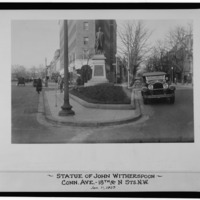
Reservation 150A, NW (OPB&G 1929)
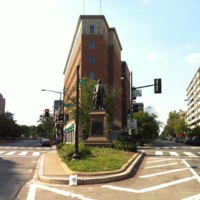
Reservation 150A, NW (Abad Ocubillo 2012)
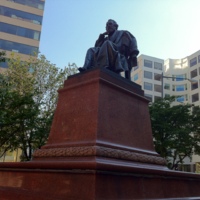
Reservation 150, NW (Abad Ocubillo 2012)
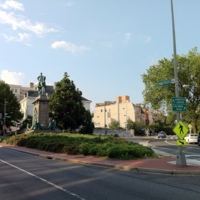
Reservation 303, NW (Abad Ocubillo 2012)

Reservation 306D (Abad Ocubillo 2012)
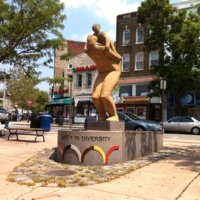
Reservation 306D (Abad Ocubillo 2012)
